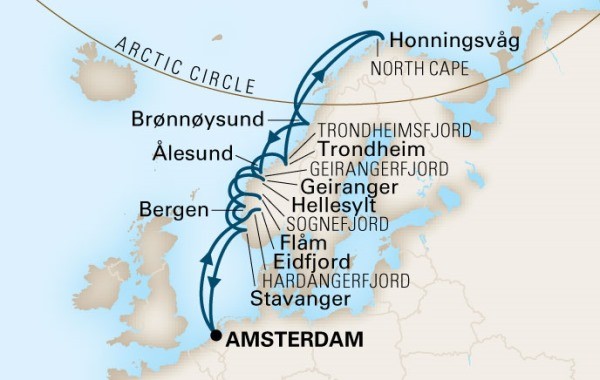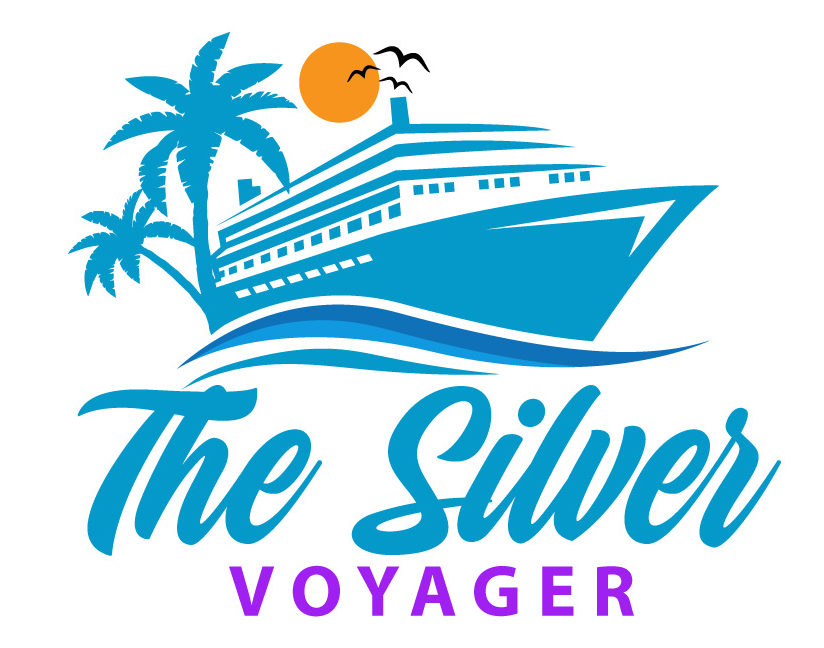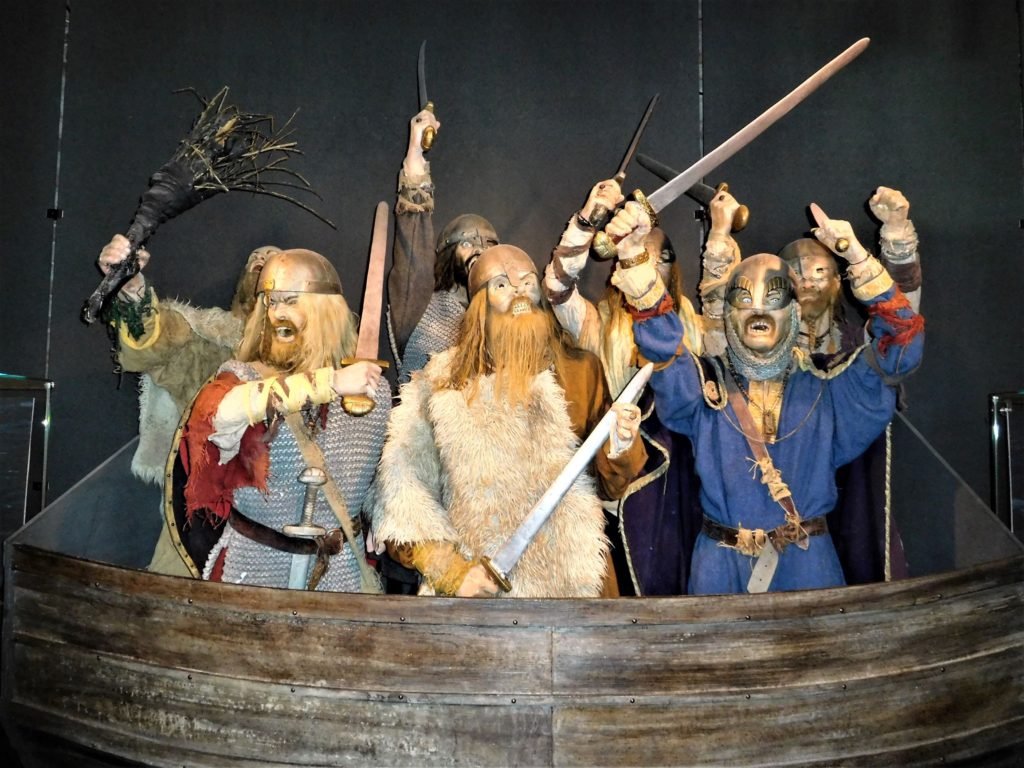If you like ancient history, you will love Stavanger, Norway for it has Vikings, oil and architecture. The Iron Age and Viking Age along with a 12,000-year-old polar bear provide amazing insights into past life while the Petroleum Museum highlights why Stavanger is so rich. This popular tourist hub also has a shopping street in the Old Town known for its colorful architecture.
Stavanger (pronounced “stuh” + “VANG” + “uh”) is located in southwestern Norway. A population of 135,118 in 2019 makes it the 4th largest city in Norway.
Old Town Stavanger
The Old Town is just minutes from the cruise ship station.
After the Second World War, there were plans to raze the center of Stavanger and rebuild it in concrete, a plan opposed by the city architect. So we can thank Einar Heden for preserving the old city center of more than 200 wooden buildings on little cobblestone lanes.
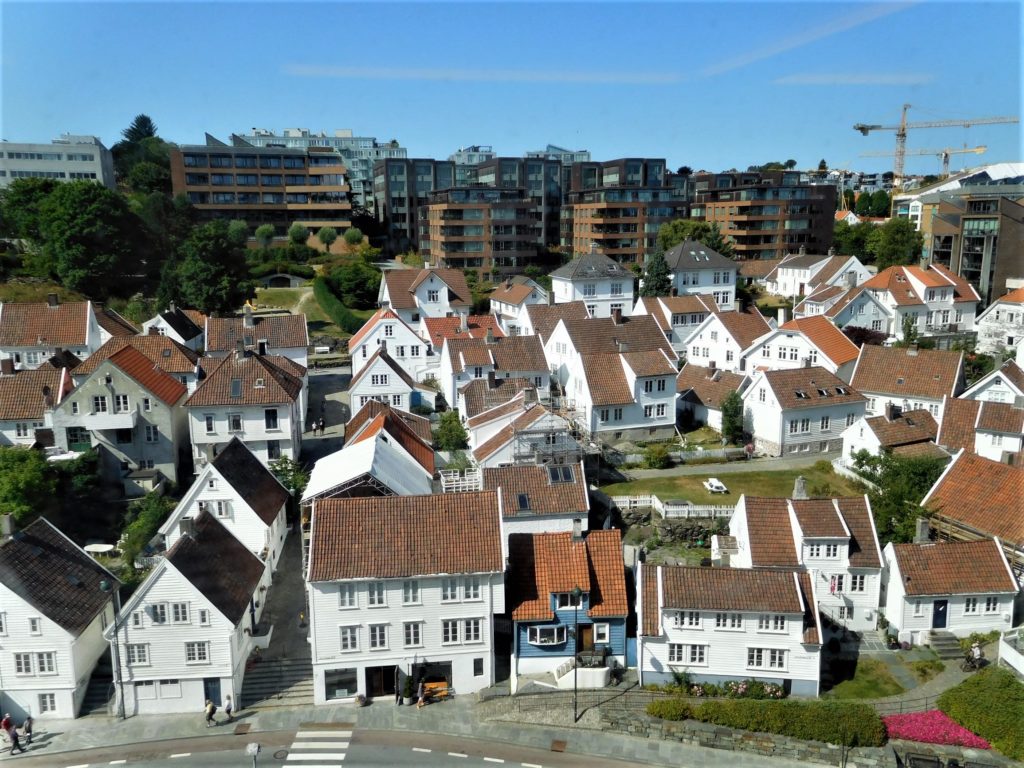
This preserved area used to be run down but is now a desirable, upmarket neighborhood and a joy to explore on foot.
Many of the whitewashed weatherboard cottages have restaurants and boutiques on their ground floors.
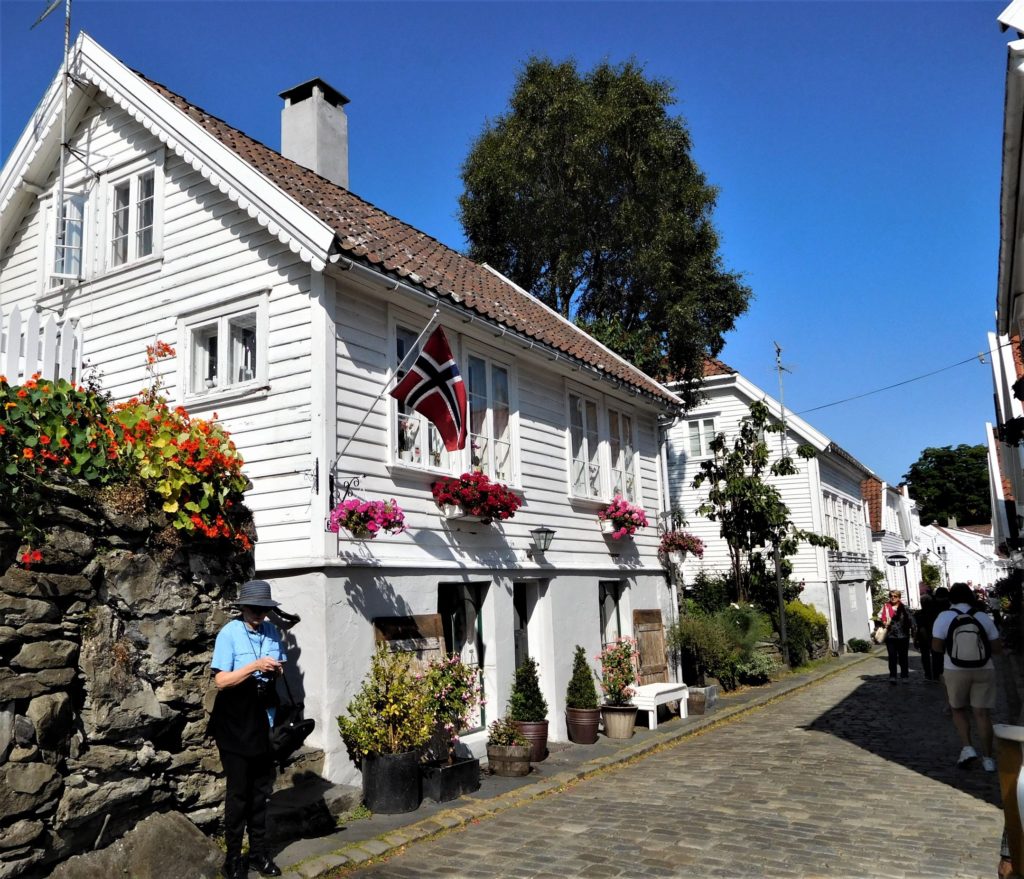
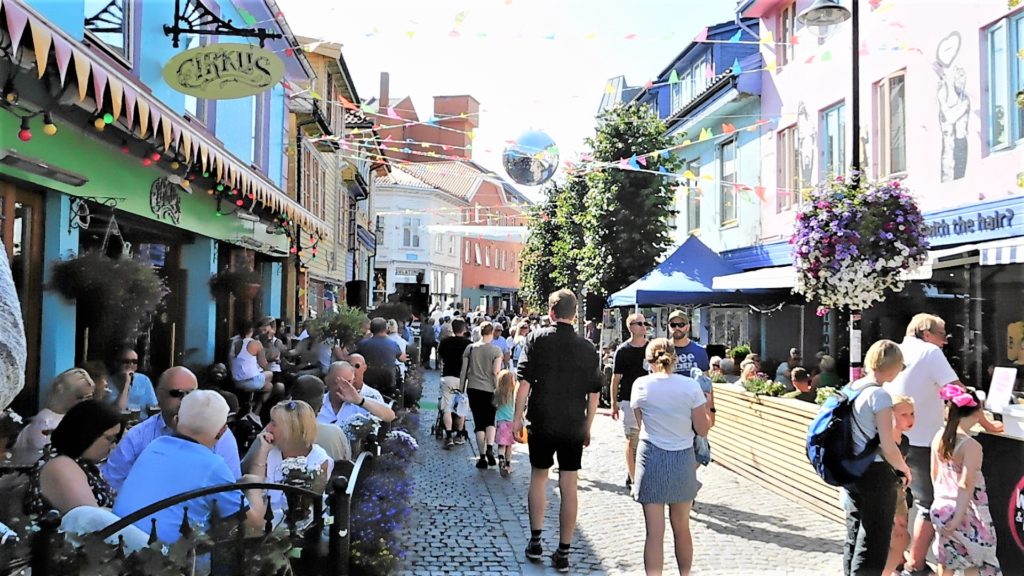
Stavanger Cathedral
The Stavanger Cathedral, built around 1125, sits in the center of the old town. It is the oldest and best-preserved cathedral in Norway.

Swords in Rock
Local sculpture, Fritz Røed, designed The Swords in Rock and King Olav unveiled it in 1983. The three swords stand 33 feet tall and are planted into the rock of a small hill next to the fjords located outside the city. The swords draw thousands of visitors each year.
The monument commemorates the Battle of Hafrsfjord, which took place in 872 and reunited the whole of Norway under the crown of King Harald.
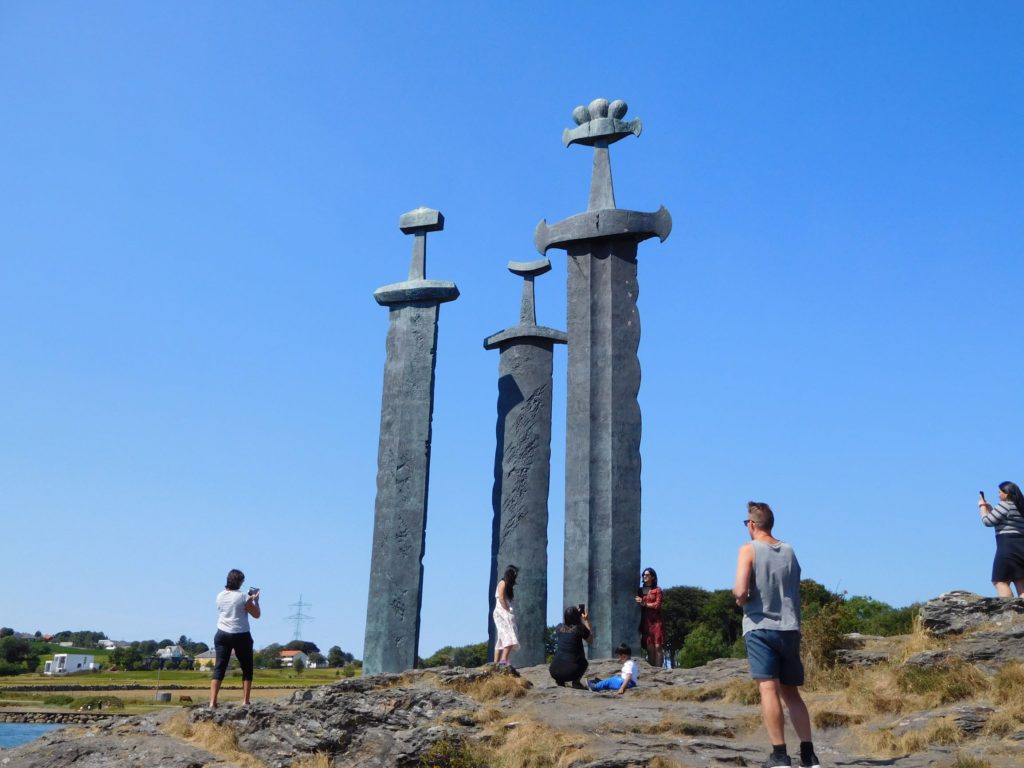
Watchmen’s Tower
The Valberg tower, constructed from 1850 to 1853, was the former observation tower of Stavanger. The tower was the permanent lodging of the watchmen in Stavanger whose duty was was to alert the people in town when there was a fire.
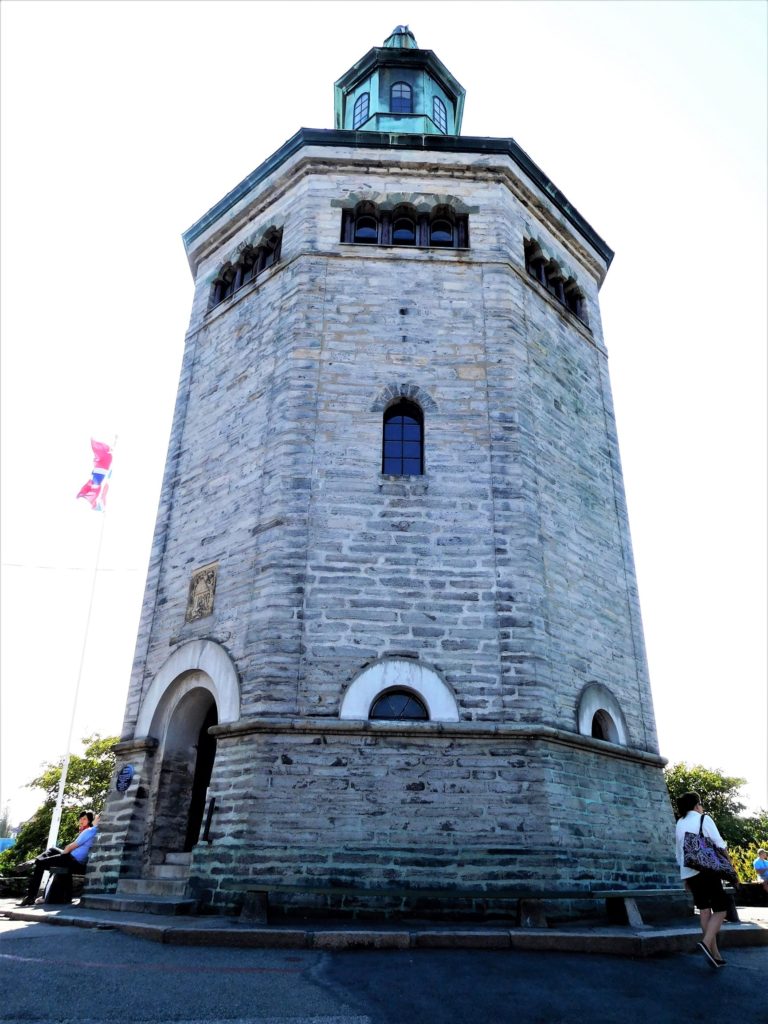
Iron Age Farm
This reconstructed Iron Age farm was revived in the 1970s after lying abandoned for 1,500 years. The farm is the only one of its kind in Norway, reconstructed on the original archaeological site. The three houses have equipment and domestic utensils and there is a fire burning in the original fireplaces.
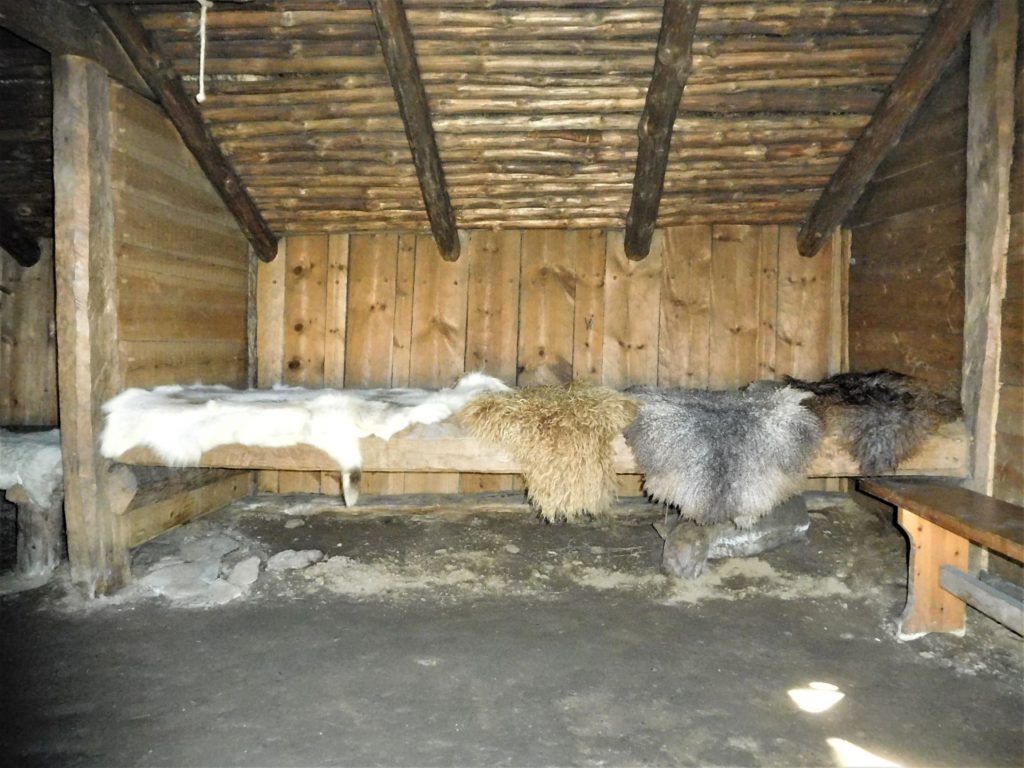
Sleeping area 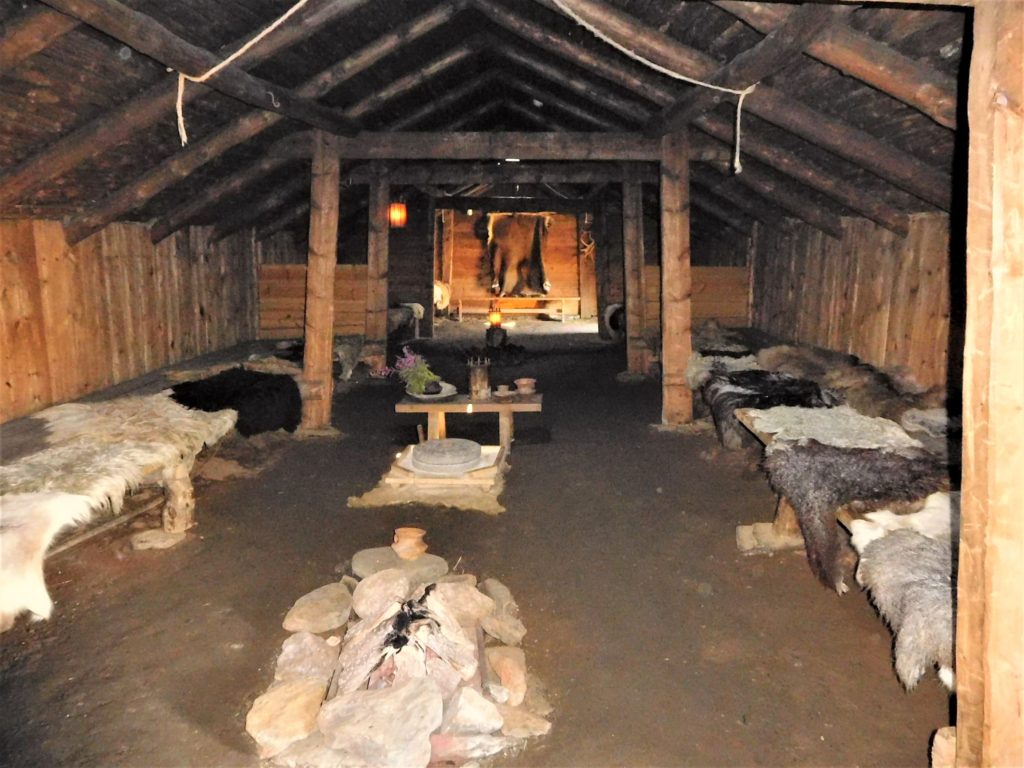
Living area in house 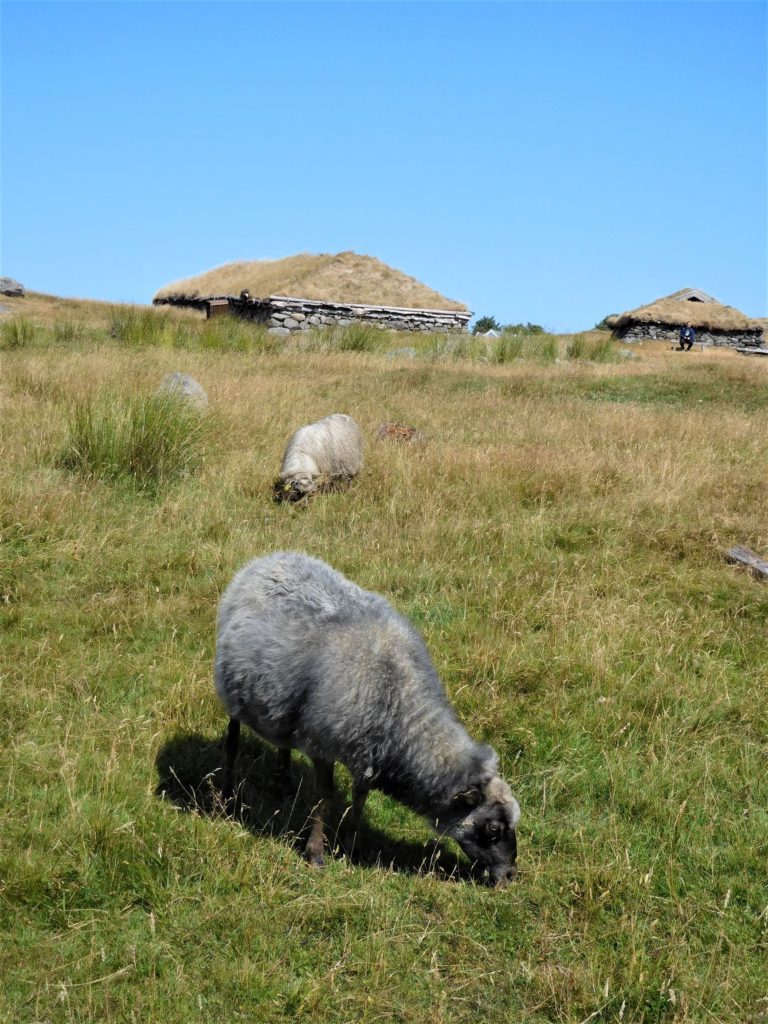
Livestock at Iron Age Farm
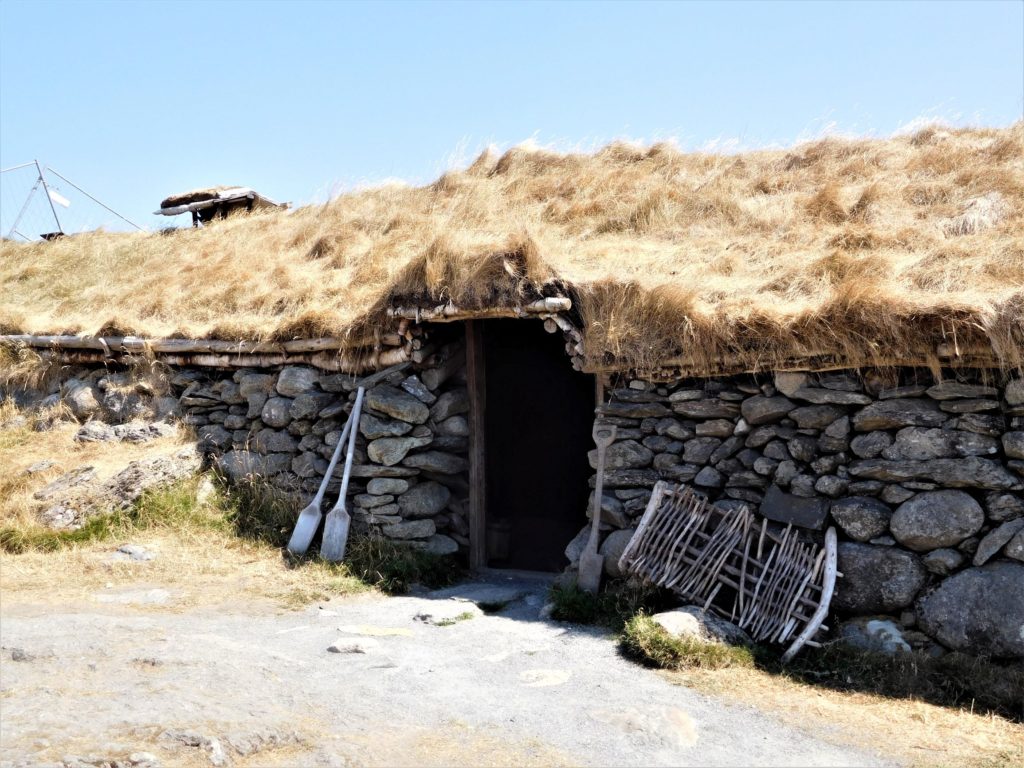
The “mistress” of the farm greeted us after which we walked on a hillside dotted with sheep. Local ancient “townspeople” greeted us, told folklore stories, worked on ancient crafts, lighted a fire with firesteels and spun wool.
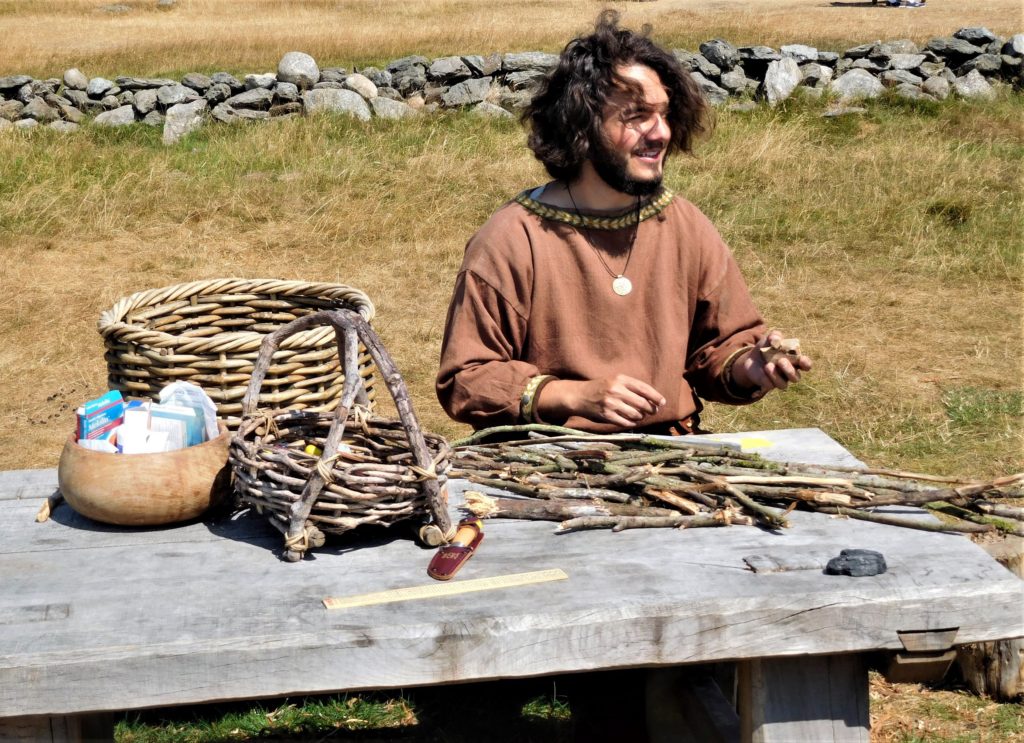
Basket weaver at Iron Age Farm 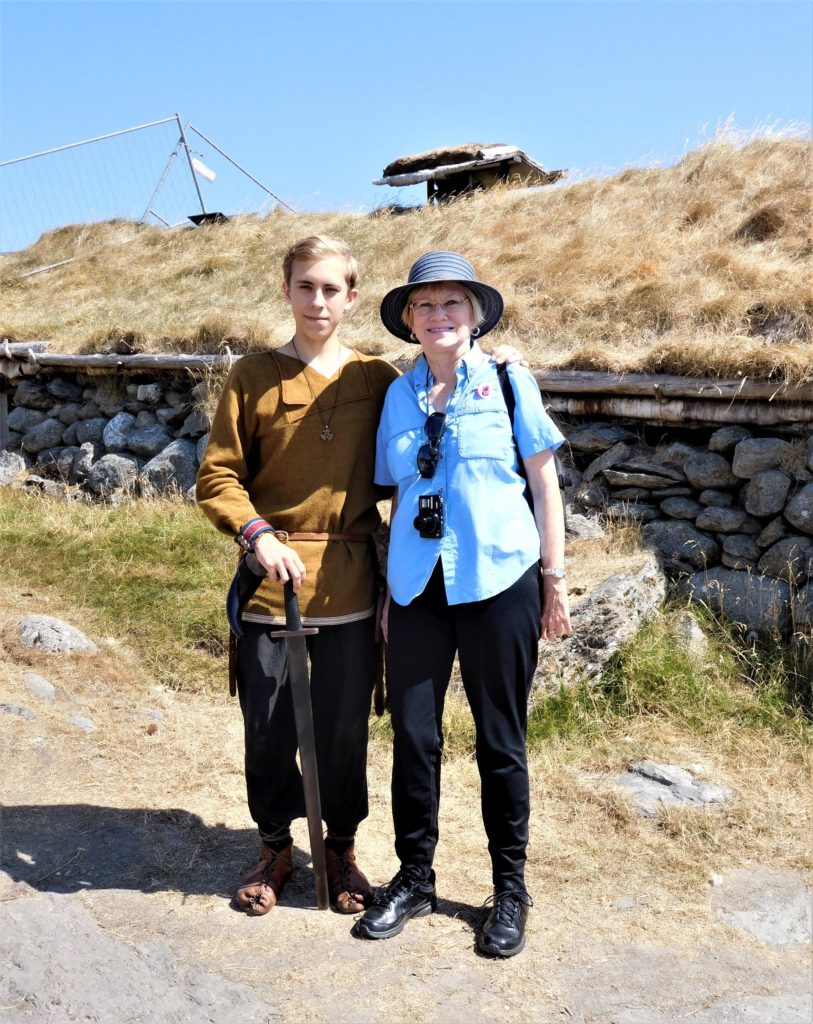
Local “ancient” resident
It is amazing to sit around the fireplace in the same manner as perhaps a family did 1500 years ago.
Interestingly, the huts have small doorways to make potential home invaders vulnerable to an attack by the residents inside.
Museum of Archeology
The polar bear on display at the Museum of Archaeology is the world’s most complete polar bear skeleton from the Ice Age, 12,400 years ago.
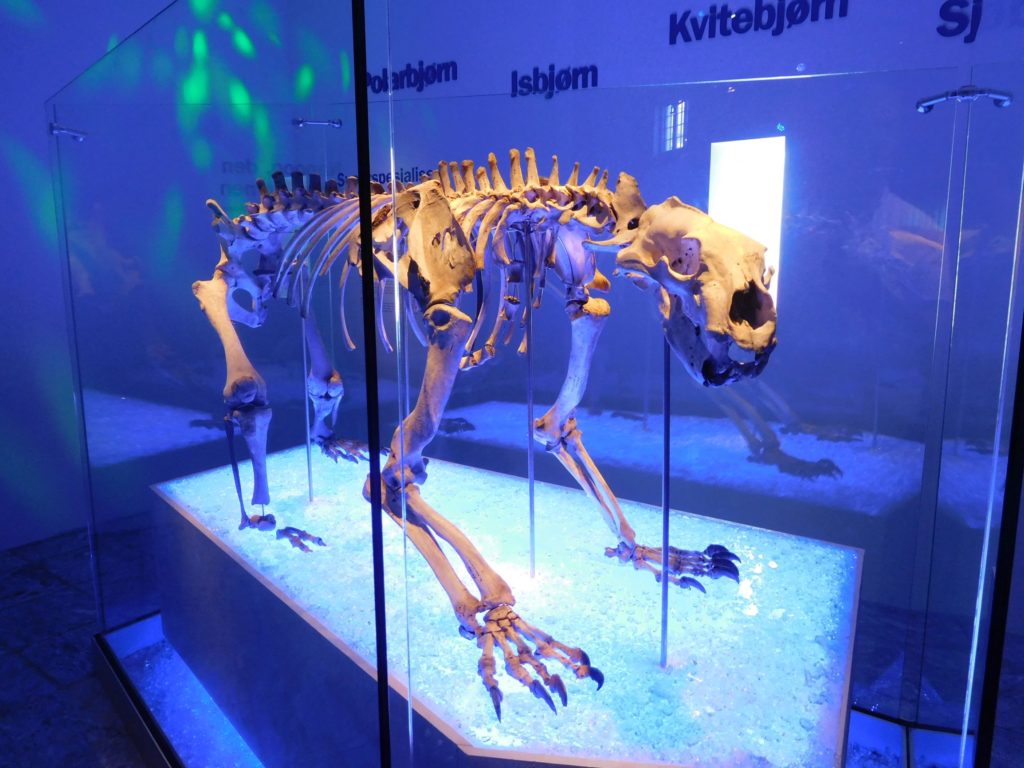
The Museum of Archeology contains replicas of the Vikings ships and boats, historical costumes, precolonial weapons, tools, and artifacts.
Stavanger’s Oil Riches
Stavanger is the undisputed oil and energy king of Europe. The discovery of the Ekofisk oil field 200 miles off the coast transformed Norway’s fortunes in 1969.
The Oil Fund, established in 1990, invests the surplus revenues of the Norwegian petroleum sector. Consequently, It has over $1 trillion in assets, including 1.4% of global stocks and shares, making it the world’s largest sovereign wealth fund.
Norway’s national and largest oil company, Equinor, has headquarters in Stavanger.
Norwegian Petroleum Museum
True to its title as “The Oil Capital”, Stavanger has a world-class museum about the Norwegian petroleum industry, opened in 1999. Approaching from the North Sea, the Petroleum Museum and its shiny metallic cylinders look like an oil platform.
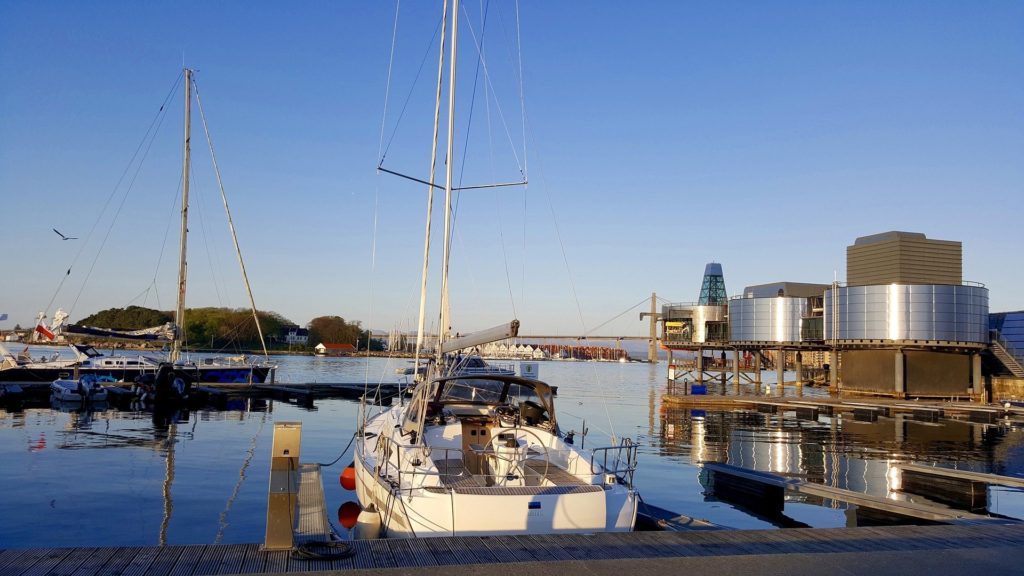
The Petroleum Museum chronicles more than 50 years of Norwegian drilling in the North Sea through video presentations and interactive sessions.
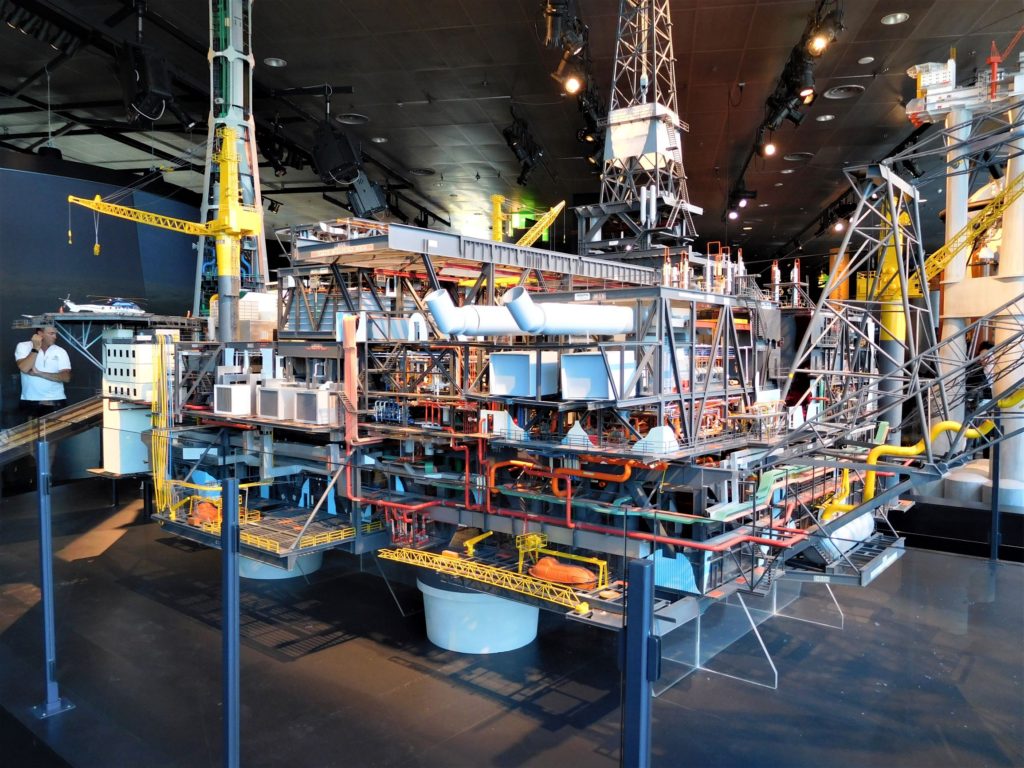
The Petroleum Museum is both fun and educational for families members of all ages.
- Interactive exhibits on “The Life of an Off Shore Worker”
- Human interest films on the lives of the workers
- Models of ships and platforms
- An exhibition about strange and large equipment
- Quiz with pictures for kids
- A special film for kids called “Oilkid”
Lifestyle
Stavanger has ranks as one of the world’s most expensive cities. The cost of living index in Stavanger is 3.14% higher than in New York City.
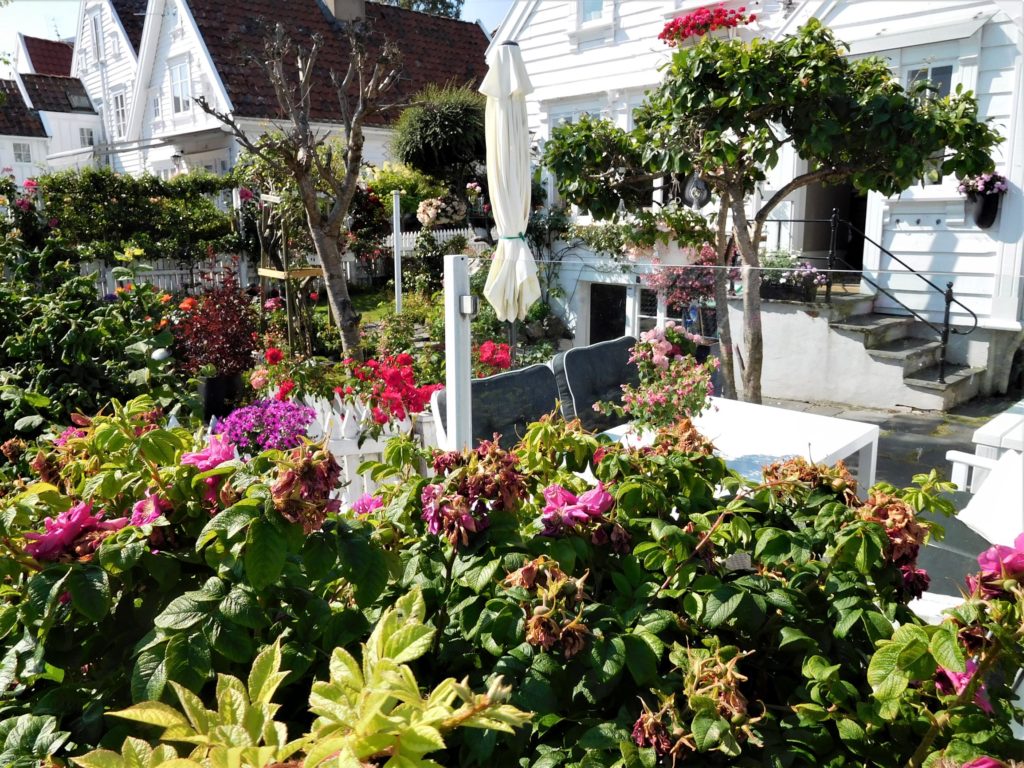
The Gulf Stream greatly influences the climate by creating warmer temperatures throughout the year thus Stavanger experiences five months with a mean temperature 50 °F.
The city has also has subzero lows during winter and is relatively wet with an annual average of 46 inches of precipitation.
In Summary
Stavanger was the perfect way to end my 14-day coastal Norway cruise on the Holland America Koningsdam. Stepping back in time was unique and inspiring. I learn a lot about the Viking period and enjoyed walking among the colorful, preserved houses of Old Town.
However, it gets very cold and is very expensive, therfore it is not a city where I would want to live.
